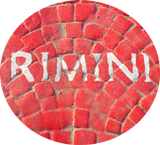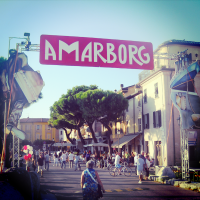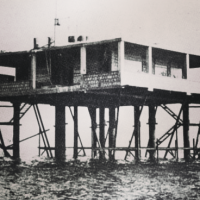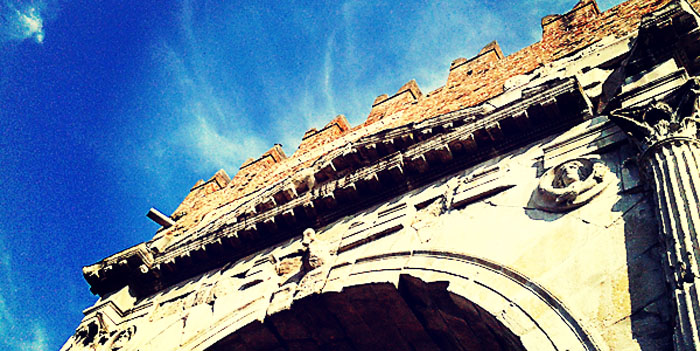Pre-Roman Rimini – Villanovan Culture, The Greeks, The Umbri, Etruscans and the Celts
Rimini is generally and rightly credited as having been founded by the Romans, under the name of Ariminum, in 268 BC.
The area, though, was far from uninhabited. Prior to the Romans, the area had been lived in and fought over by various different peoples.
The Villanovan Culture
The earliest Iron Age culture found in central and northern Italy is termed Villanovan, named after the remnants of a cemetery discovered near Villanova, just south-east of Bologna, in 1853 AD. The Villanovan culture is closely associated with the Halstatt culture of Alpine Austria, and is characterised by the introduction of iron-working, the practice of cremation coupled with the burial of the ashes in distinctive pottery. The earliest remains of Villanovan culture date back to approx. 1100 BC.
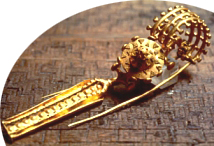 No direct evidence of the Villanovan culture has been found in Rimini, but in the nearby village of Verucchio, a very significant necropolis was discovered in the 1970s, with tombs dating from between the 9th and 7th centuries BC. Ossuaries, textiles, weapons, weaving tools, jewelry and pottery were all found in Verucchio (much of which are on display in the town’s civic museum), adding important information to the archaeological record for this period. The proximity to Rimini would suggest that, while no artefacts have been found, the Villanovan culture probably extended here.
No direct evidence of the Villanovan culture has been found in Rimini, but in the nearby village of Verucchio, a very significant necropolis was discovered in the 1970s, with tombs dating from between the 9th and 7th centuries BC. Ossuaries, textiles, weapons, weaving tools, jewelry and pottery were all found in Verucchio (much of which are on display in the town’s civic museum), adding important information to the archaeological record for this period. The proximity to Rimini would suggest that, while no artefacts have been found, the Villanovan culture probably extended here.
The Greeks
From the end of the Mycenaean period (XII-XI century BC), the Greeks were navigating along the Adriatic coast of Italy. From this time on, small colonies of Greek settlers arrived along the Adriatic coast, attracted by trade in, amongst other things, amber.
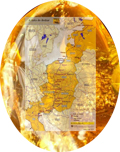 The Amber Road, from the Baltic to AdriaticDuring this period most Amber originated in the Baltic, but was traded along a route that historians and archaeologists have dubbed ‘the amber road’, a route that stretched from Northern Europe down to the Adriatic coast that corresponds to modern day Romagna. The Greeks from Romagna brought amber throughout the mediterranean basin. Amber found in jewelry from Mycenaean graves has been analysed and been proven to have originated from the Baltic Sea. Homer, Hesiod, Aristotle, Plato amongst others make reference to the golden fossil resin.
The Amber Road, from the Baltic to AdriaticDuring this period most Amber originated in the Baltic, but was traded along a route that historians and archaeologists have dubbed ‘the amber road’, a route that stretched from Northern Europe down to the Adriatic coast that corresponds to modern day Romagna. The Greeks from Romagna brought amber throughout the mediterranean basin. Amber found in jewelry from Mycenaean graves has been analysed and been proven to have originated from the Baltic Sea. Homer, Hesiod, Aristotle, Plato amongst others make reference to the golden fossil resin.
In the VIII century BC extensive Greek colonisation of Sicily and southern Italy occured, establishing an area that would be referred to by the Romans as Magna Graecia or Greater Greece. Amongst the cities of Magna Graecia was Ancona, on the Adriatic coast. Trade brought with it extensive cultural exchanges, with, for example the Etruscans developing the Chalcidean variety of the Greek alphabet -this would later evolve into the latin alphabet which much of the world uses today.
The Umbri
The Umbri, who give their name to the modern day region of Umbria (whose regional capital Perugia was founded by the Umbri) were an Italic people whose territory stretched at one stage from the Tiber river valley, up through much of Tuscanny, and across the mountains into modern-day Romagna – thus taking in the area of Rimini.
The Umbri mainly settled between the 9th and 4the centuries BC. Pliny the Elder described them as the oldest people in Italy, called Umbri by the Greeks because they had survived the deluge.
The Marrechia river valley has been described as the center of the pre-Christian Umbrian culture on the Adriatic side of Italy. The Umbri were eventually squeezed back into a smaller territory corresponding somewhat to the modern day region through warfare by the neighbouring Etruscans – ending their part in Rimini’s pre-history.
The Etruscans
While there has long been debate about the origins of the Etruscans (did they spread in to Italy from Anatolia, as described by Herodotus – or were they Italic in origin as suggested by Dionysius of Halicarnassus), historians are reasonably clear about the size of their territory which pushed up from the North of the Tiber through Tuscanny and over the Appenines into the Po river valley.
At the height of their power Etruscan settlements spread from as far north as modern day Mantua down to Salerno in the south, and would most certainly have taken in the coastline of present day Rimini where there was probably a small settlement called Arimna – preceding the later Roman settlement of Ariminum. Similar sounding names, partly because the Etruscans were, in many senses, the forefathers of the people who would become the Romans.
Expansion and the predictable conflict over trade that it brought led the Etruscans to be attacked by the Greeks, The Celts, and the Samnites, leading to the steady decline of the Etruscan territory.
The Celts
The Celts or Galli as they’re referred to by the Romans, spread down into the Po river valley in force from about 391 BC onwards, founding important cities like Milan, and closer to Rimini, Bologna (founded by the Celtic tribe the Boi), or Senigalia down the coast in the Marche region. They (though it’s more correct to talk about different Celtic tribes – in this case the Senones) passed down as far as Rome itself after routing Roman forces at the battle of Allia which they sacked, before negotiating a payoff with the Romans (variously described as paid in Gold or Wine, depending upon how bitter the Roman historian).
Ensuing warfare with Rome continued which culminated with a disastrous alliance with the Samnites and Etruscans during the third Samnite war – which paved the way for Roman expansion into the Po river valley, and the path to Empire
Read about the Roman founding of Ariminum here
